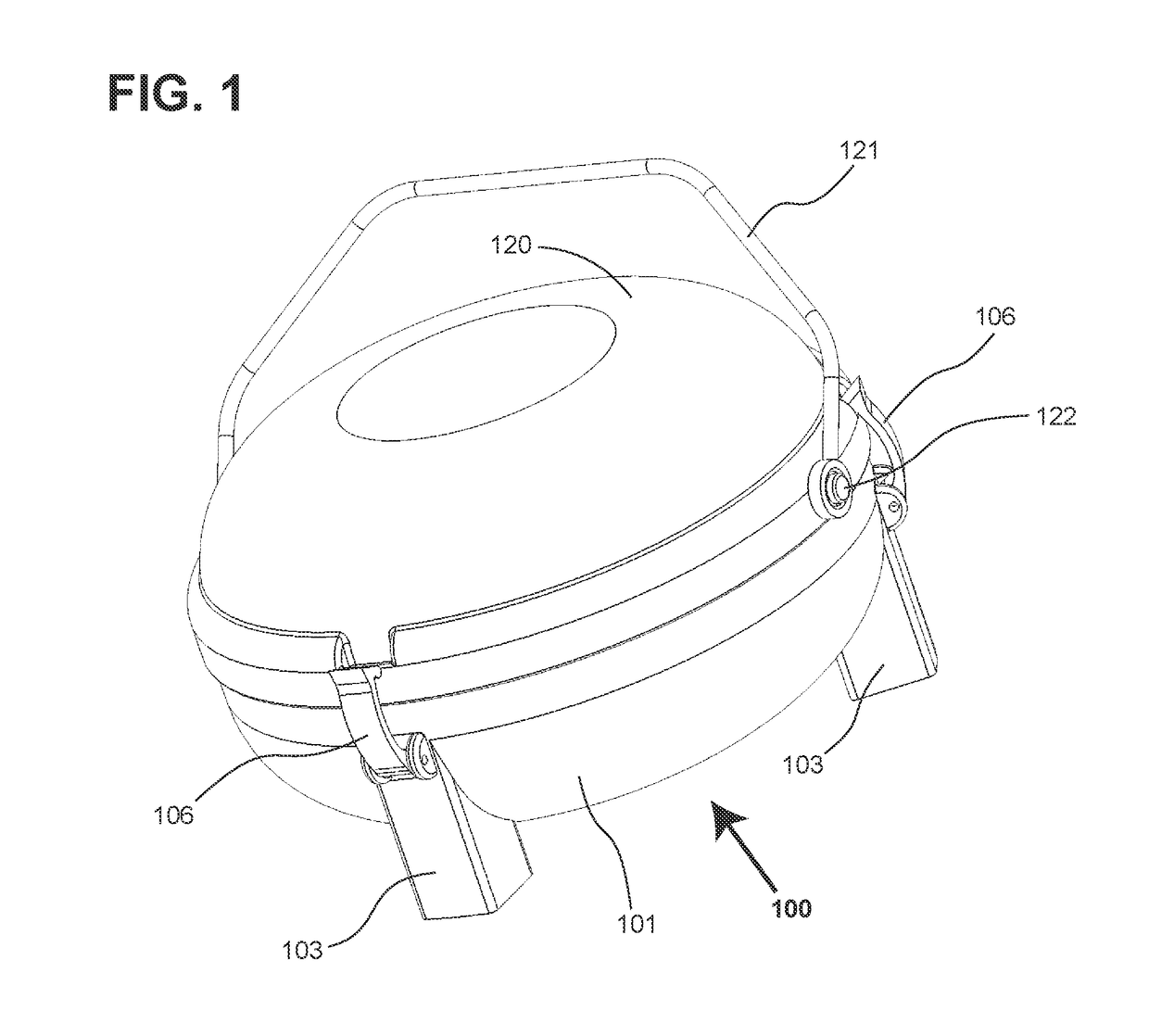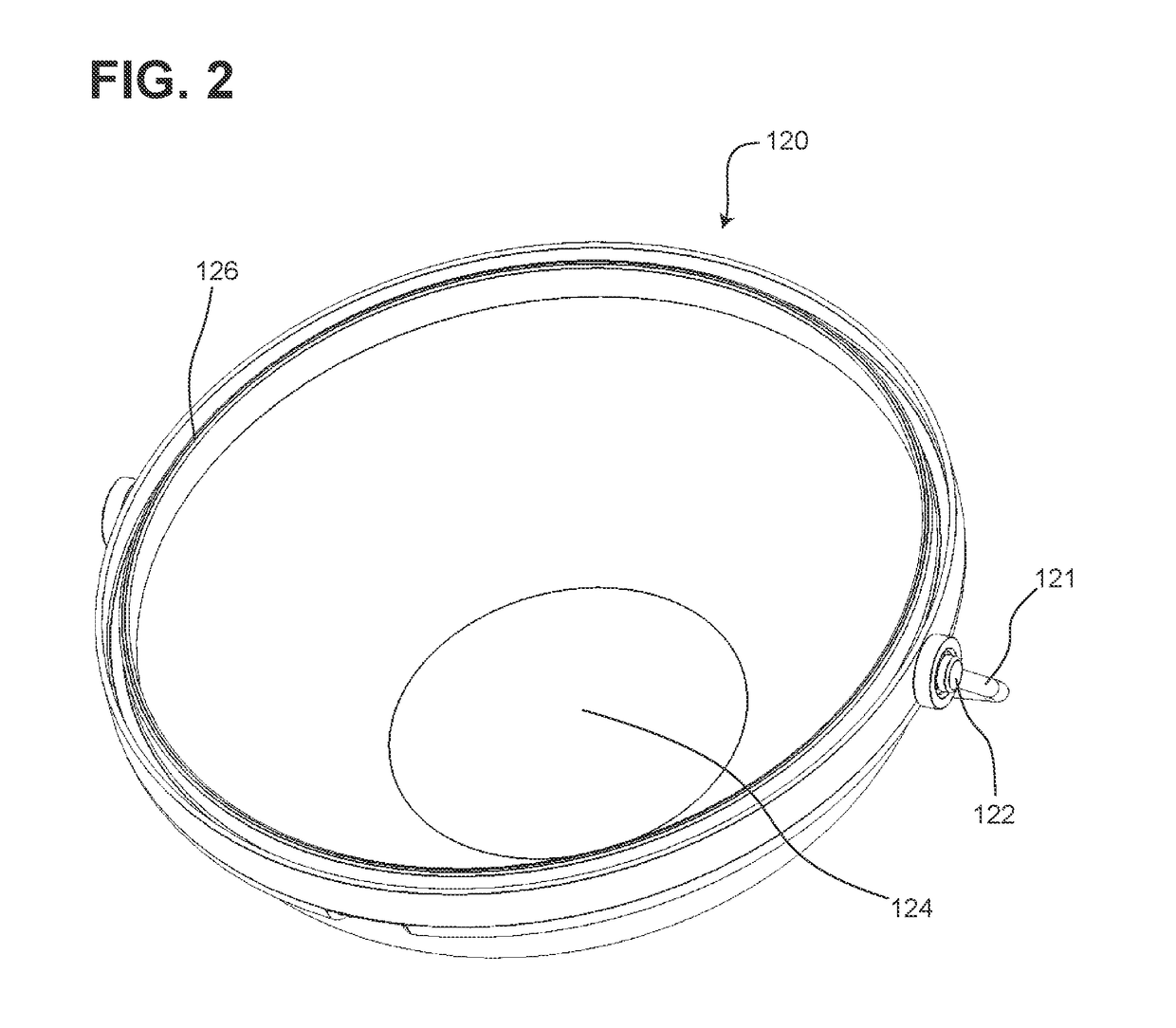The problem of effectively cleaning paint brushes is well known.
However, the flags can be easily damaged if the brush is abused—such as scraping too harshly.
In addition, ineffective cleaning techniques can accelerate the deterioration of the flags and shorten the lifespan of the brush.
These brushes are very delicate and susceptible to damage.
While often similar to sable brushes in use, synthetic brushes are not as effective in most cases and are considered inferior in most applications.
However, existing brush cleaning devices invariably suffer from a collection of maladies.
A common problem with existing brush cleaning devices is that the devices utilize
cleaning methods where the cleaning solution quickly becomes dirty as the paint released during the cleaning process accumulates in the cleaning solution.
As released paint continues to accumulate, the effectiveness of the cleaning device is reduced.
This configuration exacerbates the problem of quickly soiling the cleaning solution and limits the range of brushes that can be adequately cleaned with the device.
While these textured surfaces provide agitation, they risk damaging the brush and shortening its lifespan.
In addition to poor design of the agitation surface and the cleaning solution reservoir, existing brush cleaning devices are extremely difficult to clean.
In time, however, the released paint will settle to the bottom of the cleaning device, forming a layer of
sediment.
If this
sediment is not removed, it can reenter suspension during the next cleaning event, further accelerating the deterioration of the cleaning
efficacy of the brush cleaning device.
Despite the importance of removing the
sediment, prior designs are exceedingly difficult to clean effectively.
In some devices, the sediment forms below the agitation surface and is not fully accessible during cleaning.
In other devices, the sediment is accessible for cleaning, but the device includes corners and other sharp features that make it difficult, if not impossible, to remove the sediment completely.
A further flaw in prior designs is inadequate cover or lid design.
While this approach works initially, once the brush cleaner has been used, the threaded section of the container and / or the lid become coated in paint.
If this paint dries while the top is secured to the cleaning device, the paint serves as a glue that makes removal of the lid exceedingly difficult.
In the worst situations, the lid becomes completely fused to the container, rendering the cleaning device unusable.
Many paints contain chemicals such as metals and solvents that are harmful to humans and the environment.
In addition, cleaning solutions can contain additional harmful chemicals.
However, many brushes undergo at least a final cleaning step under the running water of a sink because the
efficacy of existing brush cleaning devices quickly deteriorates to the point where they are incapable of achieving a thoroughly clean brush.
Cleaning a brush in a sink is fraught with problems.
Environmentally, cleaning a brush in a sink can result in harmful chemicals being released into the environment.
In addition, users often rub the brush with bare hands while cleaning the brush in a sink.
This activity results in
direct exposure to the harmful chemicals often found in the paint and
solvent that is held by the brush after an initial cleaning attempt.
First, because the coiled wire is submerged, as paint is removed from the brush, it quickly clouds the cleaning solution.
As described above, the released paint will quickly accumulate, reducing the cleaning ability of the device.
This is especially troublesome where multiple brushes must be cleaned in a
single session.
In addition, even if a user waits for the removed paint to settle to the bottom of the container, removing the sediment is a cumbersome process.
First, the coiled wire itself must be removed and cleaned, which is a difficult process that risks damaging or deforming the coiled wire.
However, complete removal of the sediment is hindered by the fact that sediment has a tendency to accumulate where the container wall meets the container bottom, and this location is difficult to clean effectively.
The inevitable result of this difficult cleaning process is that the user is forced to replace their cleaning solution much more frequently, which wastes cleaning solution and may become costly.
Such action subjects delicate brushes to significant
abrasive force on the sharp edges of the splatter bar, which can damage the brush and shorten its lifespan.
Even if the brush is moved slowly across the Fredley splatter bar, the fact that the splatter bar utilizes only one reservoir of cleaning fluid means that the fluid will quickly become dirty, reducing the cleaning ability of the device.
In addition, the closed nature of the device and the tight corners present below the splatter bar make it susceptible to the cleaning challenges described above.
However, this embodiment suffers from similar issues because the float is submerged in the cleaning solution, quickly dirtying the cleaning solution and reducing the effectiveness of the device.
Moreover, the float further complicates cleaning of the device, obscuring the bottom of the device and making it difficult to adequately remove sediment once the cleaning solution has an opportunity to settle.
While other devices and methods have been proposed for cleaning paint brushes, none of these inventions, taken either singly or in combination, adequately address or resolve the aforementioned problems.
 Login to View More
Login to View More  Login to View More
Login to View More 


